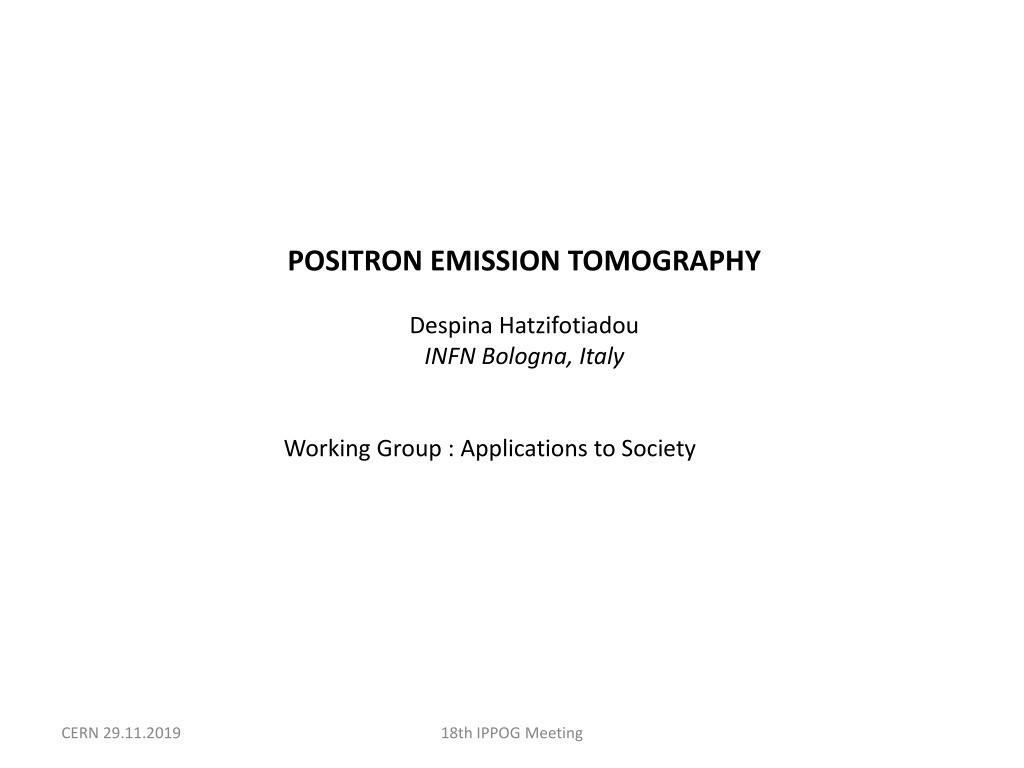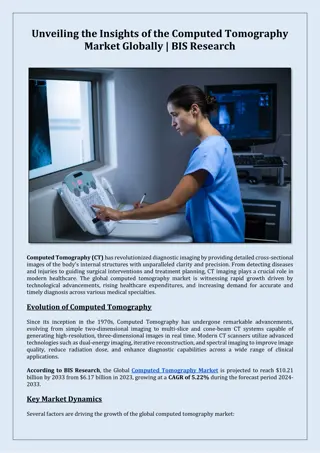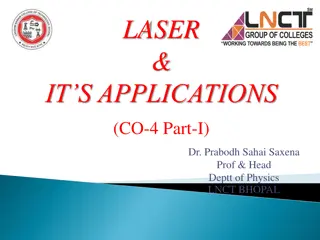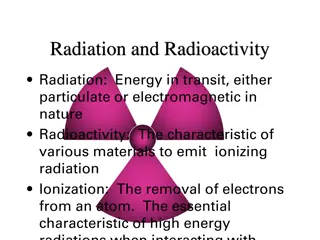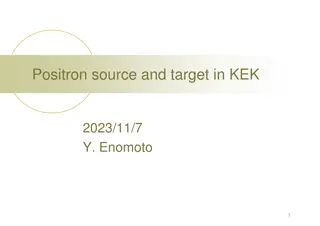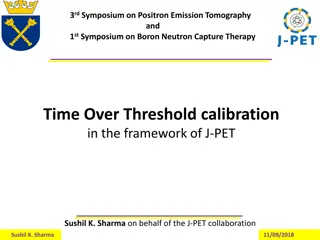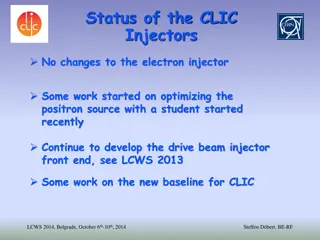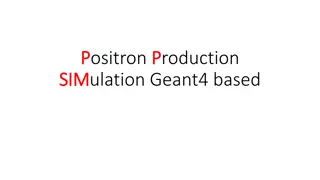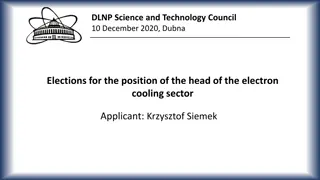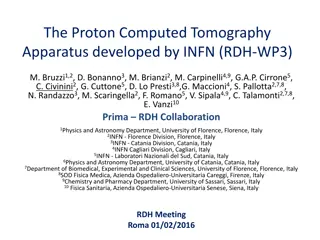Positron Emission Tomography: Applications in Society and Recent Developments
Positron Emission Tomography (PET) is a medical imaging technique focusing on metabolic differences in the body. By using positron-emitting radioisotopes, PET can detect how molecules are taken up by healthy and cancerous cells, aiding in accurate tumor localization with lower doses. The evolution of photon detectors and new scintillators have improved PET scanners over the years. Recent advancements include Time-Of-Flight (TOF) PET, offering enhanced accuracy in tumor localization. Links to resources about PET history, detector technology, and high-time resolution TOF PET are provided.
Download Presentation

Please find below an Image/Link to download the presentation.
The content on the website is provided AS IS for your information and personal use only. It may not be sold, licensed, or shared on other websites without obtaining consent from the author. Download presentation by click this link. If you encounter any issues during the download, it is possible that the publisher has removed the file from their server.
E N D
Presentation Transcript
POSITRON EMISSION TOMOGRAPHY Despina Hatzifotiadou INFN Bologna, Italy Working Group : Applications to Society CERN 29.11.2019 18th IPPOG Meeting
Proposed template Principle Positron-emission tomography (PET) focuses on differences in the body s metabolism. PET uses molecules involved in metabolic processes, which are labelled by a positron-emitting radioisotope. The molecule, once injected, is taken up in different proportions by healthy and cancerous cells. The emitted positrons annihilate with electrons in the surrounding atoms and produce a back- to-back pair of rays of 511 keV. The radiation is detected to reveal the distribution of the isotope in the patient s body. Required equipment Photon detectors with good energy resolution (for low-energy photons) Application (from particle physics) The photon detectors used are basically are scintillators coupled to photomultipliers; development of TOF (Time-Of-Flight) PET is of particular interest, since it provides accuracy in localizing the tumor with less dose for the patient. CERN 29.11.2019 18th IPPOG Meeting
CERN 29.11.2019 18th IPPOG Meeting
CERN 29.11.2019 18th IPPOG Meeting
Detectors used NaI (Tl) with PMTs in the early PET scanners New scintillators introduced in the course of the years (already developed for particle physics experiments) BGO (Bi4Ge3012) CsI(Tl) LSO (Lu2SiO5 Cerium-doped lutetium oxyorthosilicate) etc Photomultiplier tubes evolved to multichannel photomultipliers, Avalanche Photodiodes (AVDs) and Silicon PhotoMultipliers About TOF-PET CERN 29.11.2019 18th IPPOG Meeting
Useful Links Positron Emission Tomography and CERN (history of PET) https://drive.google.com/file/d/1YbwygQPNc_6Qd0Z4ninEGqNfcQTN_vRl/view Recent developments in PET Detector Technology https://www.ncbi.nlm.nih.gov/pmc/articles/PMC2891023/ https://cerncourier.com/a/clearpem-clarifies-breast-cancer-diagnosis/ New opportunities for high time resolution clinical TOF PET https://link.springer.com/article/10.1007/s40336-019-00316-5 Add interview (mentioned by Yiota) CERN 29.11.2019 18th IPPOG Meeting
